Youth Voices: CBE In the Classroom and Beyond
CompetencyWorks Blog
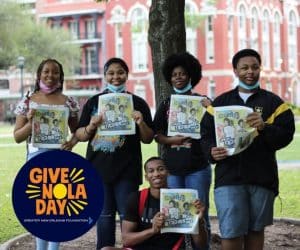
In November of 2024, I had the wonderful opportunity to attend the Aurora Institute Symposium alongside two high schoolers, David and Edwin, and Ms. Rhonda Broussard (Founder of Beloved Community). There, I spoke about how my experience with Youth Participatory Action Research with Beloved reignited my interest to learn and equipped me with fundamental skills I could use in my career.
Amidst the various workshopers and speakers at the symposium I heard the term competency-based education (CBE) for the first time in my academic career. Students would get excited talking about flexibility and agency – two terms that did not align with my academic school’s educational style – then proceed to explain all the ways in which this system provided the space to learn at one’s own pace. My first thought was, “CBE? Whatever that is, I wish I had some of that at my academic school.”
Moments later, I came to realize that despite being unfamiliar with the term, I was lucky enough to be exposed to CBE during my high school years. I simply wasn’t exposed at my academic school. In this reflection, I share my learning experiences after learning about CBE. Outside of school, I had plenty of opportunities to pursue programs that cultivated a CBE-like learning environment, even if they aren’t necessarily seen as “traditionally educational institutions” like schools. I see CBE as a flexible approach that can happen in school or beyond, whether it is a traditional public, private, or home school or a community-based out-of-school program.
My Experiences Learning In and Out of School
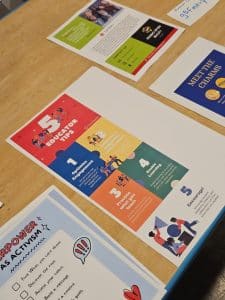
For the final two years of my high school career I was dual enrolled in two schools: my academic school and an arts conservatory in the media arts discipline (The New Orleans Center for Creative Arts – NOCCA). I applied to NOCCA’s media arts department because my main school didn’t offer much in terms of the arts. In the mornings throughout the school week, I spent my time at my academic school and then went to NOCCA.
A key reason I was excited to pursue opportunities beyond my academic school was because I wanted to know how the things I learned could affect me, my community, and functioning in daily life. For me, learning goes beyond memorizing facts. It’s comprehending the context that surrounds it, our role within the world, the boundlessness of curiosity, and active, real-world application of various skills. At NOCCA, I found these opportunities when we took field trips in the city, invited professionals to come speak with us, and worked on group projects. Every chance I had to align my artistry with real world events or to collaborate with other students helped nurture my academic/professional self. I sought out more opportunities like these.
One of the most formative was the YPAR summer academy, which was recommended to me by one of my 826 New Orleans (a writing program) “teachers”. (More on 826 New Orleans later). During the YPAR summer academy, I had the chance to create a research project on a subject of my choosing. Beyond this, I had the freedom to seek out local community resources, and the flexibility to adapt to challenges along the way. I could consult my teacher/advisor as needed, and I didn’t feel the pressure to perform in a strict or constraining way.
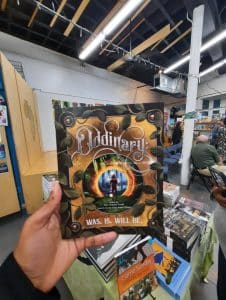
Similarly, I discovered two programs that not only ignited my interest in writing, but supported it: 826 New Orleans and The New Orleans Junior Journalism Program. While at NOCCA I was exposed to the technical side of the media arts world, at 826 I was given the space to combine social activism with creative writing. Through this program, I met other students who shared their experiences and how their local community impacted them. Together, we produced essays, poetry, and even spoke at the release party for our joint book “Oddinary. Was. Is. Will Be.” in celebration of youth agency and voice. While enrolled with JRNOLA, I not only studied journalism, but published articles. In tandem with the adults who aided in maintaining the program, youth discussed their unique interests and the ways they wished their articles to reflect this. With constant communication between drafts and onsite field trips to sporting, cultural, and local events, we were able to acquire many social skills on the go. And with these skills we produced resume-quality publications that we could use for college applications.
Hope in CBE
YPAR, 826 New Orleans, The New Orleans Junior Journalism Program, and NOCCA were pivotal in cultivating my vision for an ideal learning environment. Not only could I connect with my local culture through artistic initiatives like these, but I also naturally picked up resume-worthy skills such as collaboration, people skills, empathy, leadership, decision making, and the ability to effectively network.
Reflecting on these experiences, I made a list of some of the essential outcomes I gained.
YPAR
- The Dichotomy of Diversity and The Rubix Cube Approach, a research project about diversity in the media.
- Project Often Reality, a community service project that expanded on the same research
NOCCA
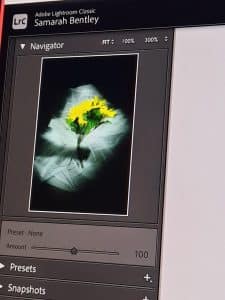
- Understanding of Adobe software and technology for jobs
- Building artistic integrity and collaborative skills
- Cultivating perseverance and learning how to handle rejection
- Networking with and celebrating peers
JRNOLA
- Interviewing and people skills
- Research skills and ethics
- Publishing articles
- Empathy
- Understanding deadlines and industry terms
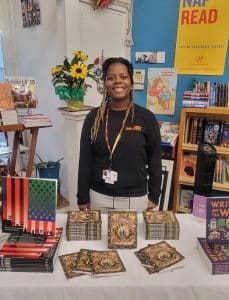
826 NEW ORLEANS
- Conceptualizing and then implementing a project
- Publishing a book and collaborating with peers
- Editing and refining writing to be clear
In these spaces, the value of learning, fun, and community were not mutually exclusive. In these spaces, a student could grow into their strengths and commit to self-discipline. In these spaces, field trips opened an unimaginable number of doors. YPAR, JRNOLA, 826 New Orleans – just to name a couple – are programs that offered me the space to both navigate and forge my own learning journey as a young adult. Alongside NOCCA, these programs allowed me to build my future myself, instead of offering a predetermined one. I felt seen. I felt celebrated. I felt respected. I felt inspired.
I felt like I wanted to learn again.
All Students Should Experience Powerful Learning
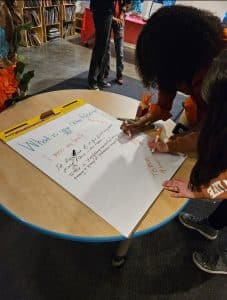
It is my hope that other learners have the opportunity to experience and be aware of these essential learning outcomes, whether they are gained in “school” or in other learning communities.
How can schools help learners develop the ability to be mindful, well-informed, and intentional about the information they absorb in class? First step: Collaborate. Ask students unique, thoughtful questions that acknowledge not only their interests, but their talents and culture.
Next step? Rinse, and repeat. Here’s why. The more consistent a school is with creating open, dynamic dialogue between students, the quicker they may come to realize that the student in question is already forging their goals for the future. They simply need support and guidance. Engagement levels will rise, and the ability to build upon prior knowledge will come with every new conversation or project that arises.
Whether in school or in the community we all benefit when we draw meaningful connections between what we were taught and what we are going to do with it. There are opportunities in every place – especially in my city of New Orleans – to develop global-citizens, personalize learning, and play an active role in collaborating with other students, teachers and administration with new ideas. We just need to make the space for these opportunities to flourish.
Learn More
- Designing for Big Picture Learning at New Village Girls Academy
- Learner-Centered Ecosystems as a Path Forward for Public Education: A Convergence of Perspectives and Research
- At the Aurora Institute Symposium 2024, A Call to Center Young People and Transform K-12 Systems

Samarah Bentley is an activist and artist whose talents lie in youth advocacy and developing creative solutions alongside peers to better her community. The New Orleans Children and Youth Planning Board, 826 New Orleans, Geaux Girl, Jrnola, YPAR Academy, and Girl Scouts to name a few, have shaped both her personal growth and community awareness. She is the creator of Project Often Reality, a community driven initiative that addresses diversity in the media, education, and media literacy. Samarah has received several awards in writing, media arts and French language proficiency and has published articles in Gambit Weekly and Lifestyles Health and Wellness magazine. She is currently working on her third novel, with hopes to publish her first within the next few years.